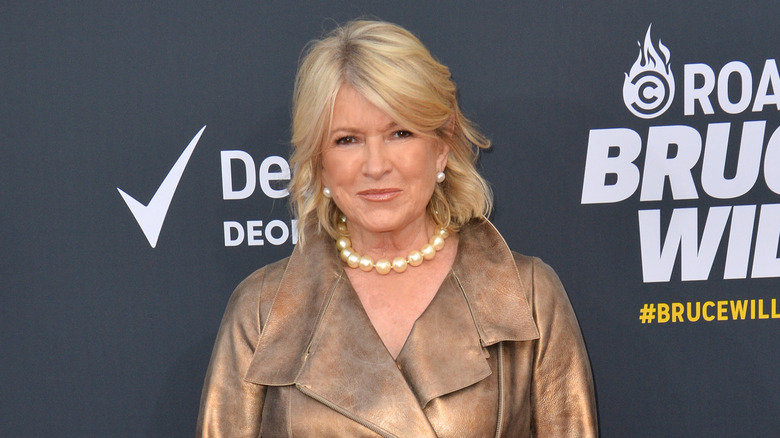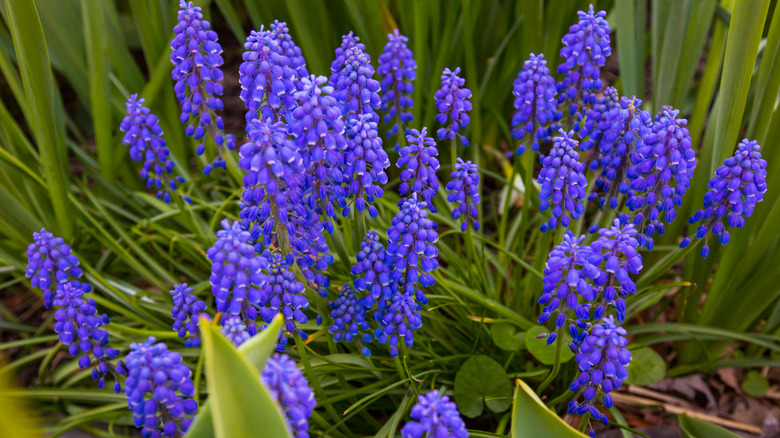Martha Stewart's Gardener On The Fall Bulbs To Plant Now For A Gorgeous Spring
Martha Stewart is known for all things home and garden, so it might be safe to assume that her head gardener, Ryan McCallister, is quite the expert himself. You might want to take McCallister's spring-blooming bulb recommendations into consideration if you would like to plant fall bulbs now for a gorgeous spring. The head gardener took to the Martha Stewart website to reveal that crocus, grape hyacinth (Muscari armeniacum), glory-of-the-snow (Chionodoxa forbesii), scilla, snowdrops (Galanthus spp.), and ornithogalum are some of the best options.
Not only do the aforementioned bulbs bloom beautifully during the fall, but they are also perfect for naturalizing. This process involves planting bulbs the same way they would present themselves in nature— in sporadically placed clumps across the ground. The bulbs McCallister recommended are ideal for naturalizing because they gradually spread on their own. This eliminates the amount of time you have to spend completing the process yourself. With all of these benefits, you may have been convinced to add these bulbs to your garden during fall.
Plant these fall bulbs for a spring-ready garden
McCallister's first fall bulb plant recommendation, crocuses, come in a variety of colors, including yellow, red, and blue — just to name a few. You should plant crocuses in the fall, six to eight weeks before the first frost. As for growing conditions, these bulbs can handle either full or partial sun. Do not forget to keep up with routine watering.
Many varieties of muscari will leave you with unique grape-like blooms during spring. This includes grape hyacinth (Muscari armeniacum), which is a popular variety that can be planted in full sun to partial shade. Fall-planted glory-of-the-snow can bloom so close to the start of the spring that there is a chance you'll catch its petals breaking their way through snow on the ground. These blue and white flowers can be grown in full sun to partial shade. McCallister shared that he is a fan of multiple varieties of scilla, including striped squill (Puschkinia scilloides) and Siberian squill (Scilla siberica). Striped squill blooms from March to April to reveal stunning blue or white flowers. It requires medium watering and can be grown in full sun to partial shade.
Meanwhile, Siberian squill looks nearly identical and also can be grown in full sun to partial shade. These scilla varieties are not ideal for people with plants or children because they are poisonous. Galanthus produce small white flowers when they bloom in the spring. This McCallister recommendation requires full sun. Of all ornithogalum varieties, the head gardener prefers the shorter varieties as they are better for naturalizing. They thrive in full sun to partial shade and produce green or white blooms.

